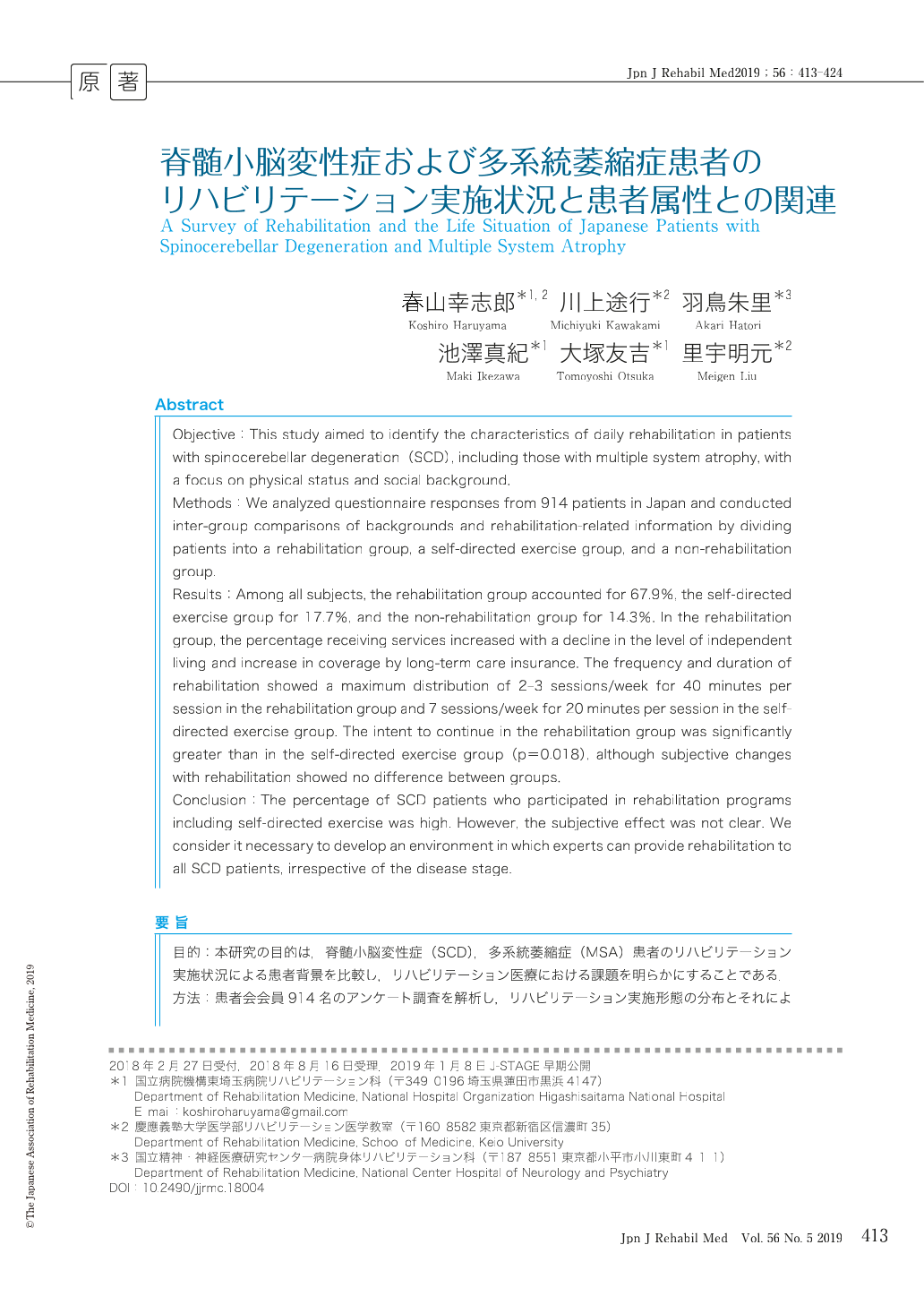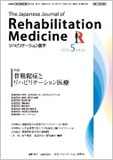Japanese
English
- 販売していません
- Abstract 文献概要
- 1ページ目 Look Inside
- 参考文献 Reference
要旨
目的:本研究の目的は,脊髄小脳変性症(SCD),多系統萎縮症(MSA)患者のリハビリテーション実施状況による患者背景を比較し,リハビリテーション医療における課題を明らかにすることである.
方法:患者会会員914名のアンケート調査を解析し,リハビリテーション実施形態の分布とそれによる基本情報,リハビリテーション関連情報の群間比較を実施した.
結果:対象者のうちリハビリテーション実施群は67.9%,自主練習群は17.7%,非実施群は14.3%であった.リハビリテーション実施群では,生活自立度の低下や要介護度の増加に伴い実施割合が増加した.リハビリテーション実施群と自主練習群におけるリハビリテーションによる主観的変化は差を認めなかったが,リハビリテーション実施群では継続の意思が有意に高かった(p=0.018).
結論:SCD,MSA患者の自主練習を含めたリハビリテーションの実施割合は高かったが,主観的な訓練効果は明らかでなかった.病期にかかわらず専門職による定期的なリハビリテーション指導が行える環境の整備が必要と考えられる.
Objective:This study aimed to identify the characteristics of daily rehabilitation in patients with spinocerebellar degeneration (SCD), including those with multiple system atrophy, with a focus on physical status and social background.
Methods:We analyzed questionnaire responses from 914 patients in Japan and conducted inter-group comparisons of backgrounds and rehabilitation-related information by dividing patients into a rehabilitation group, a self-directed exercise group, and a non-rehabilitation group.
Results:Among all subjects, the rehabilitation group accounted for 67.9%, the self-directed exercise group for 17.7%, and the non-rehabilitation group for 14.3%. In the rehabilitation group, the percentage receiving services increased with a decline in the level of independent living and increase in coverage by long-term care insurance. The frequency and duration of rehabilitation showed a maximum distribution of 2-3 sessions/week for 40 minutes per session in the rehabilitation group and 7 sessions/week for 20 minutes per session in the self-directed exercise group. The intent to continue in the rehabilitation group was significantly greater than in the self-directed exercise group (p=0.018), although subjective changes with rehabilitation showed no difference between groups.
Conclusion:The percentage of SCD patients who participated in rehabilitation programs including self-directed exercise was high. However, the subjective effect was not clear. We consider it necessary to develop an environment in which experts can provide rehabilitation to all SCD patients, irrespective of the disease stage.

Copyright © 2019, The Japanese Association of Rehabilitation Medicine. All rights reserved.


